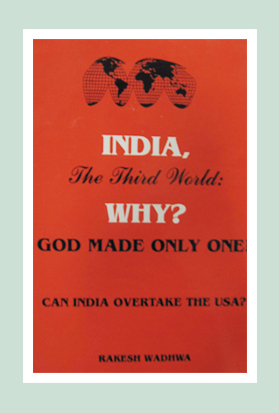Petrol and Diesel Prices in India: A Slippery History and a Fiery Road Ahead

The Indian Government had for several decades controlled the prices of various petroleum products. Under the pretext of “the larger good”, the government had supposedly subsidized the prices of the most important petroleum products, like diesel, petrol, kerosene and later LPG (liquefied petroleum gas).
The subsidy was nothing more than a “feel-good” factor for the people, who believed they were paying a much lower price since a part of it was being contributed by the government. To begin with, how much intelligence does it take to realize that the government doesn’t generate any money? It’s the taxpayers’ money that’s used to provide subsidies. And, anyone with even a basic understanding of economics would be quick to deduce that subsidies are the most inefficient way of managing any resources, leave alone something as precious as oil. Subsidies, by their very nature, cost much more than the benefits they deliver.
A Turn for the Better… Supposedly
It was as late as 2010, when a report named “Viable and Sustainable System of Pricing of Petroleum Products” was submitted, reflecting the inefficiencies. Subsequently, petrol prices were liberalized and became linked to crude oil import prices. But we’d have to wait another two years before diesel prices were freed.
The 2010 report was followed by a study conducted by the IRADe (Integrated Research for Action and Development). This is what it showed: The elimination of diesel subsidy would result in the rate of inflation. BUT (1) this would only be a slight increase and (2) it would only be in the short run. In the longer run, inflation would be much lower if diesel subsidies were eliminated. Moreover, the GDP would be much higher if diesel prices were liberalized.
Yes, if the subsidy is removed, consumers would be impacted… but that would be by less than 0.5% of their consumption levels, the study showed.
Better sense prevailed, and the government finally eliminated diesel subsidy in 2013.
And Then a Turn for the Worse
Unfortunately, good sense didn’t prevail for too long. Although petrol prices are linked to the import price of crude oil, the government has imposed stifling taxes on top of this amount.
Let’s look at we’re paying for petrol in the name of it being “market determined”:
As of June 21, 2018
| Price per litre charged by oil mobility companies to dealers | Rs. 36.87 |
| Dealer commission | Rs. 3.62 |
| Central excise | Rs. 19.48 |
| State tax | Rs. 16.19 |
| Price per litre paid by the consumer | Rs. 76.16 |
This means what should have cost the consumer closer to Rs.40 per litre now costs Rs.76. This is close to a 100% increase.
A Double-Edged Sword
What happens when the government puts such high taxes on petrol prices? Consumers are forced to spend a larger part of their income on this. Their purchasing power reduces. They have lower disposable income for spending on other commodities. And, they have lower savings. Both savings and consumption are vital for economic growth.
On the other hand, businesses have higher operating costs. Some companies are able to pass this onto consumers by charging higher prices for commodities. The consumer, therefore, end up paying multiple times for this tax.
Companies that aren’t able to increase the price of their goods may consider options like lower salaries or downsizing. This also impacts disposable income and savings.
And some companies will become financially unviable. They’ll have to close shop and let their people go.
So, the government collects taxes to spend on “the larger good” and ends up curbing businesses, job growth, disposable income, savings and investments. As the government coffers fill, the economy continues to bleed.
 Rakesh Wadhwa. Ever since, I was a school boy, I knew India was on the wrong path. Socialism was just not what we needed to get ahead. Government controlled our travel; government controlled our ability to buy and sell; and government controlled our freedom to move our money. My life has focused on the inherent rights people have. When I was in college, I never understood, what the governments meant by their "socialistic attitude". If people are free to buy, sell and move their capital themselves without any restrictions by state, then the welfare of people is inevitable & hence the countries they live in will become wealthy. The government has no right whatsoever, to point a finger at me or my business. I am not a revolutionary. I just want to light up my cigarette and not get nagged about it. I believe in non-interfering attitude to attain more.
Rakesh Wadhwa. Ever since, I was a school boy, I knew India was on the wrong path. Socialism was just not what we needed to get ahead. Government controlled our travel; government controlled our ability to buy and sell; and government controlled our freedom to move our money. My life has focused on the inherent rights people have. When I was in college, I never understood, what the governments meant by their "socialistic attitude". If people are free to buy, sell and move their capital themselves without any restrictions by state, then the welfare of people is inevitable & hence the countries they live in will become wealthy. The government has no right whatsoever, to point a finger at me or my business. I am not a revolutionary. I just want to light up my cigarette and not get nagged about it. I believe in non-interfering attitude to attain more. 
 The Bastiat Award is a journalism award, given annually by the International Policy Network, London. Bastiat Prize entries are judged on intellectual content, the persuasiveness of the language used and the type of publication in which they appear. Rakesh Wadhwa won the 3rd prize (a cash award of $1,000 and a candlestick), in 2006.
The Bastiat Award is a journalism award, given annually by the International Policy Network, London. Bastiat Prize entries are judged on intellectual content, the persuasiveness of the language used and the type of publication in which they appear. Rakesh Wadhwa won the 3rd prize (a cash award of $1,000 and a candlestick), in 2006.
What the readers are saying…